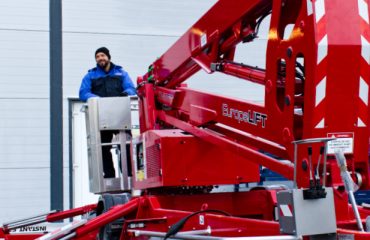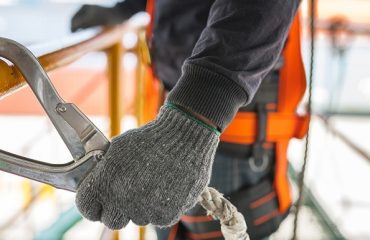In connection with the updated scaffolding regulations that came into force in 2016, as well as an increase in the number of inspections by the Norwegian Labour Inspection Authority, many people have asked us various questions about scaffolding. Below are some of the questions we have received most frequently, as well as our answers and recommendations.
«Are there any requirements for a scaffolding course for me as a private person?»
We have strict regulations for working at heights, and the Norwegian Labour Inspection Authority regulates this in Norway. These regulations apply to professionals working at height, but are not as strict for private workers. In general, it can be said that private persons who are going to use scaffolding on their own do not need a scaffolding course (NB: when the scaffolding is for their own use). It is important that the supplier’s user guide is carefully followed.
As a private individual, you may have an employer’s responsibility – so it is important to be aware of your own role and responsibilities. We have written more about this here: When a private individual becomes an employer
«I already have years of experience, do I need to be trained anyway?»
The regulations state that anyone installing scaffolding above 2 metres platform height must have documented training. If you do not have documentation of training (that fulfils the content requirements of the regulations), there is unfortunately no getting away from the fact that you need training now. One of the reasons the rules were tightened was the hope of reducing workplace injuries and work-related fatalities. Falls account for a high proportion of these accidents.
These accidents tend to happen when younger workers are employed and in workplaces where there is insufficient training. The problem is that it is difficult to adapt the rules so that only those who are not competent or who neglect their training are affected. This means that many people who are more than sufficiently qualified must still receive training to fulfil the requirements of the regulations.
«What are the training requirements for the use and construction of scaffolding?»
- Scaffolding user: must have received training in the use of the scaffolding, review of the user guide
- Scaffolder up to 5 m: must have documented 7.5 hours of theoretical + 7.5 hours of practical training
- Scaffolders up to 9 m: must have documented 15 hours of theoretical + 15 hours of practical training
- Scaffolding erectors over 9 m (and anyone installing scaffolding that is not fully dimensioned): must have documented 36 hours of theoretical + 72 hours of practical training + 6 months of employment in a company that uses scaffolding
«Who can approve scaffolding and when should the scaffolding be inspected?»
Before use, the scaffolding must be inspected by a qualified person. An employee who has undergone training in accordance with the regulations is considered a qualified person. For example, an employee who has undergone training in accordance with section 17-2 of the regulations is considered a qualified person for scaffolding with a top scaffolding floor of up to five metres. As long as the scaffolding is in use, it must be inspected at regular intervals. The scaffolding must always be checked after storms, when other conditions may have affected stability and strength, and when the scaffolding has not been used for a week or more.
«When should scaffolding have guardrails?»
Scaffolding floors or stairs that are higher than 2.0 metres above the ground must always have railings. If there are special hazards in the event of a person or object falling from the scaffolding floor, the scaffolding or access must have handrails, even at lower heights.
«How far can the scaffolding stand from the wall?»
Scaffolding floors must be installed so that the individual components cannot shift during normal use. The unsecured distance between the scaffolding and the wall must not exceed 0.30 metres. If the space between the scaffolding and the wall exceeds 30 cm, the railing and skirting board must also be installed here.
«How high should a skirting board be?»
Where there is a risk of objects falling, the railing must have a foot rail at least 0.10 metres high. On scaffolding, the foot rail must be at least 0.15 metres high. On wooden scaffolding with a floor height of less than 8 metres, the foot rail must be at least 0.1 metres high. The skirting board must lie down towards the floor.
«How much should the anchorage withstand?»
Scaffolding that is not designed to be freestanding or suspended must have adequate anchoring. The anchorages must be dimensioned for the loads to which the scaffolding is exposed. Anchorages must be tested with 20 per cent higher loads than they are designed for. The regulations require that one or more tests must always be carried out to check whether the anchors, together with the structure to which the scaffolding is to be anchored, can withstand the loads for which it is designed. A safety factor of 20% (1.2) for testing is in line with European practice.
«What are the rules for scaffolding railings when working on a pitched roof?»
When working on roofs where there is a risk of falling, employees must always be protected against falling. The use of collective safety measures, such as guardrails or scaffolding, is required. Work above 2 metres must always be secured with guardrails. The guardrail must be a minimum of 1.0 metre, with handrail, knee rail and foot rail. The railing must be able to withstand the greatest calculated load in the event of a fall.
When working on roofs with a large slope and/or on roofs with a large distance to the eaves, consideration should also be given to whether personal fall protection equipment should be used in addition to guardrails or scaffolding.
* Please note that our answers are only for guidance




